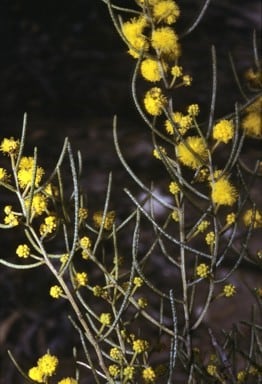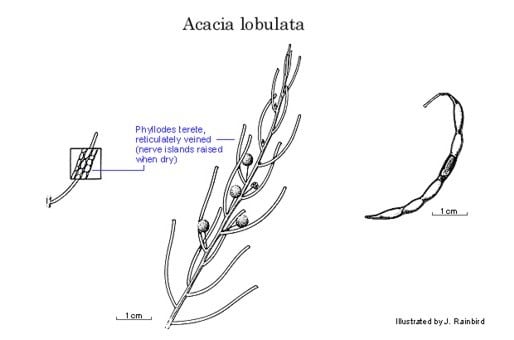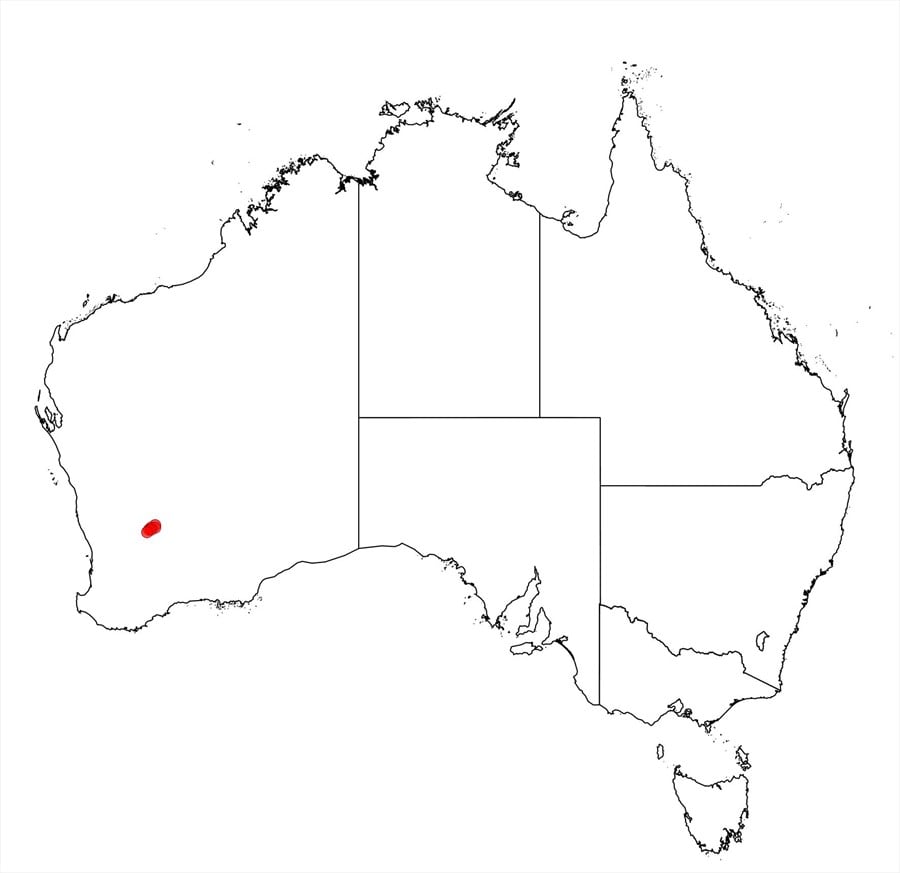Acacia lobulata R.S.Cowan & Maslin
WATTLE
Acacias of Australia
Common Name
Chiddarcooping Wattle
Family
Fabaceae
Distribution
Known only from the Chiddarcooping Hill area (c. 70 km NE of Merredin), W.A.
Description
Shrub 1–2 m high, erect, open, often spindly. Branchlets slightly angled, ±tuberculate, glabrous, resinous. Phyllodes ascending, incurved, terete, 1.5–3.5 cm long, 0.7–0.8 mm diam., with strongly excentrically curved acute tip, dull grey-green, glabrous, with resinous impressed nerves forming a coarse regular reticulum with markedly raised areoles; gland to 2 mm above pulvinus. Inflorescences simple, 1 per axil, occasionally paired; peduncles 2.5–4.5 (–6) mm long, puberulous; basal bracts ovate, acute; heads globular, 3.5–4.5 mm diam., 15–17-flowered; bracteoles ±spathulate. Flowers 5-merous; sepals 1/3–1/2-united. Pods linear, raised over seeds, strongly curved, to 6 cm long, 3–4 mm wide, thinly chartaceous, smooth, glabrous, resinous. Seeds longitudinal, oblong, compressed, 4–5.5 mm long, dull, dark brown; aril membranous, apical.
Habitat
In gritty loam and sand on gradual slopes at foot of decomposing granite breakaways, in woodland and shrubland.
Specimens
W.A.: Chiddarcooping Hill area [precise locality withheld for conservation reasons], J.Brown 59 & A.Williams (CANB, G, K, MEL, NSW, NY, PERTH); loc. id., S.D.Hopper 6396 (PERTH).
Notes
A member of the ‘A. flavipila group’; it is the only known species of Acacia in Australia with terete phyllodes having reticulate venation; most closely related to A. verricula, which has flat phyllodes, more flowers per head, and free sepals, but quite similar fruits and seeds.
Conservation
Gazetted a rare species in W.A.
FOA Reference
Data derived from Flora of Australia Volumes 11A (2001), 11B (2001) and 12 (1998), products of ABRS, ©Commonwealth of Australia
Author
R.S.Cowan
Minor edits by J.Reid
This identification key and fact sheets are available as a mobile application:
URL: https://apps.lucidcentral.org/wattle/
© Copyright 2018. All rights reserved.









